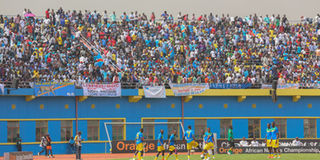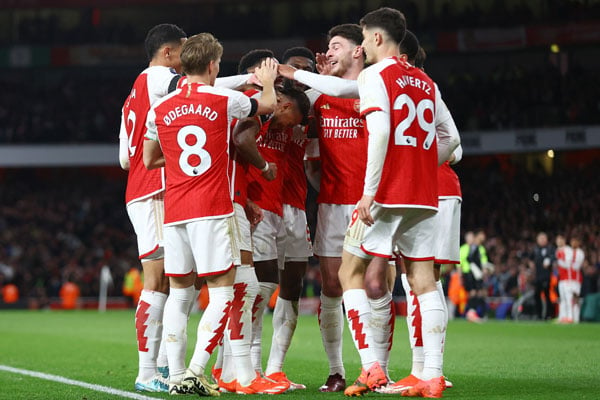Derby fever brings Kigali to standstill

Rwanda players take part in drills ahead of game. Photo by Andrew Mwanguhya
What you need to know:
Kacyiru is some seven to eight minutes by motorbike to Amahoro Stadium. It was hardly any different in closer stadium environs as multi-coloured Rwandan and DRC fans trekked to the match venue
KIGALI.
Sounds of the incessant vuvuzela horns could be heard in the Kigali suburb of Kacyiru - where Saturday morning chanced on this writer - as early as 10am here.
Kacyiru is some seven to eight minutes by motorbike to Amahoro Stadium. It was hardly any different in closer stadium environs as multi-coloured Rwandan and DRC fans trekked to the match venue.
Hundreds of Congolese fans had the previous day been flown in from Kinshasa to join the thousands that had previously ‘migrated’ to Huye, Southern Rwanda, for group matches - and later Kigali. The late ‘90s political tensions between the two notwithstanding, Rwanda and Democratic Republic of Congo (DRC) know deep down they are knitted.
In Gisenyi, for example, a sizeable number of Rwandans were born in Goma and only migrated at the end of the 1994 Genocide.
Some like Goma-born Rwandan Shema Olivier only moved to Gisenyi aged four. Of course that was not an age to make sense of anything but on Saturday; he still felt the shared loyalty. “I wish both could win but it is impossible,” he told The Daily Monitor, “But now I will support Rwanda, because am Rwandan.” “However, if it’s DRC against any other team, I’m definitely Congolese.” There are several others like Olivier in Rwanda.
“I can tell you about 60 per cent of the people in Rubavu will be supporting DRC,” added Olivier, a claim backed by Ugandan Rwanda-based journalist Usher Komugisha, “It’s true,” she said, “Actually most of them have families both in Gisenyi and Goma.” Add that to the 3,000 tickets that were allocated to the Congolese at Amahoro and you have quite a big voice; so big it had spells out-shouting the close to 30,000 Rwandan voices. Earlier outside the stadium, a great number of Amavubi fans painted themselves in blue, yellow green, while the even more colourful Leopards cruised in their rides draped in national colours.
Once all in, Congolese voices and scenes heavily challenged the claim by organisers they were only 3,000.
The atmosphere in the 30,000-plus seater was boisterous as both sets of fans, who filled it about two hours to kick-off, took each other on in who made most noise, sang best, and applauded and booed best. As a local musician made rounds on the tartan, energetically willing the fans to wave back, home aficionados obliged in gay abandon. Yet one of loudest boos welcomed him at the Congolese section. It was so loud it could have passed for a lingala hit rendition.
Such mixed noises welcomed both teams for warm-ups, post national anthems and when their sides scored or needed a lift from the 12th man.
The players never disappointed either, showcasing desire, skill and lunging in when necessary.




